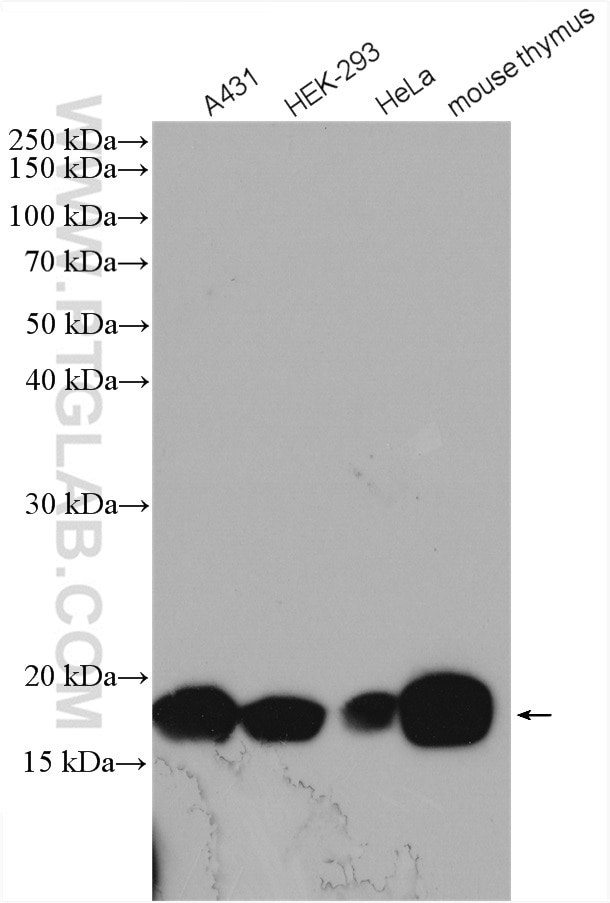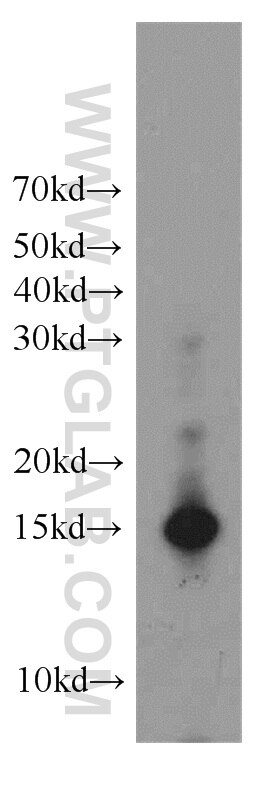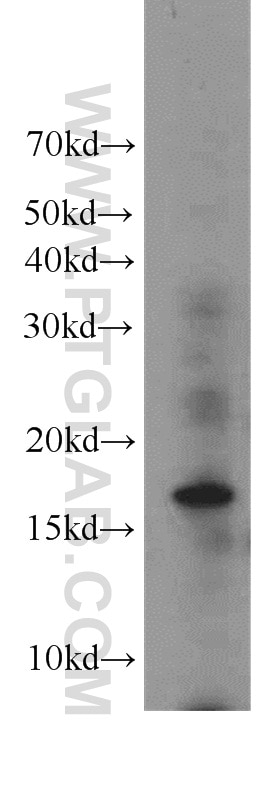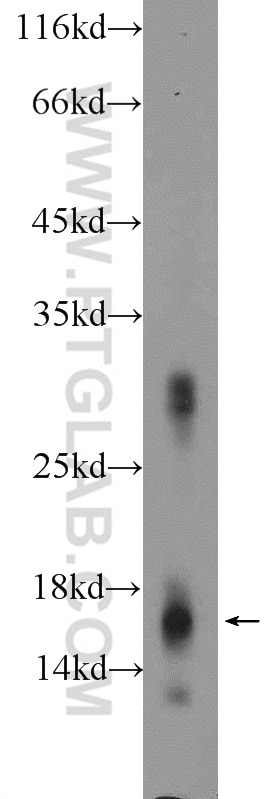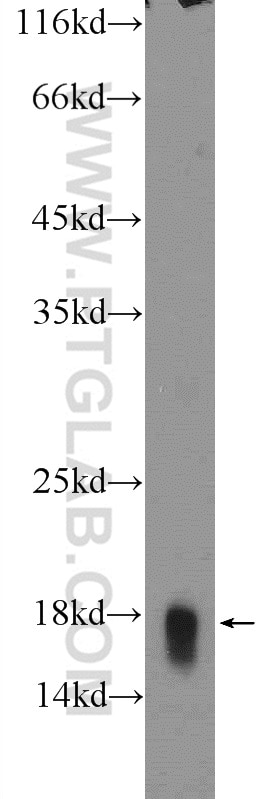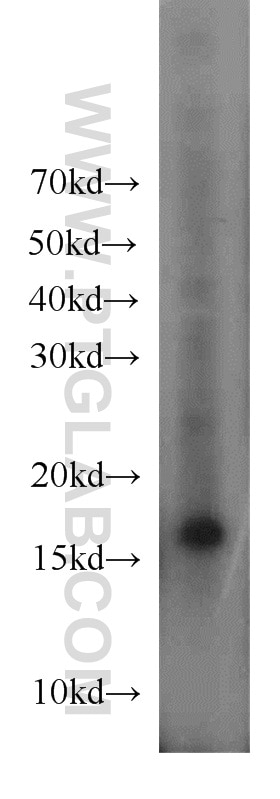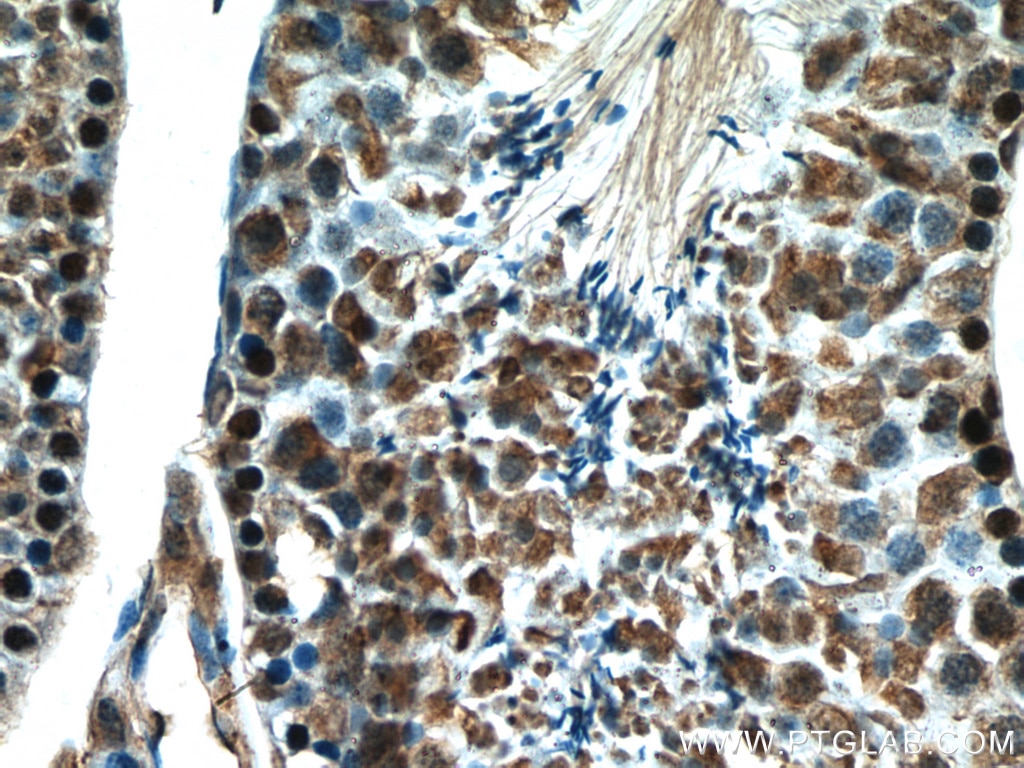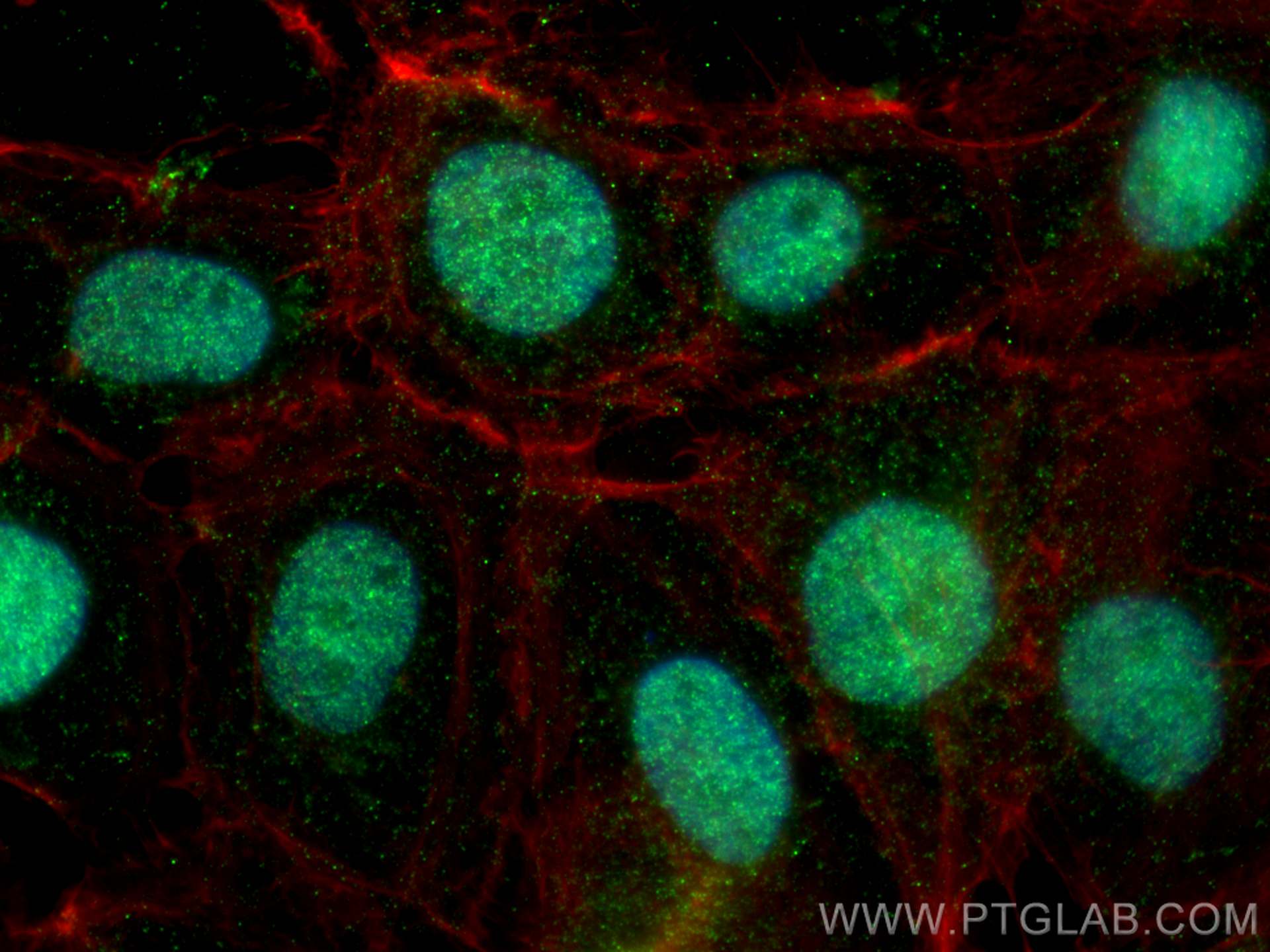- Phare
- Validé par KD/KO
Anticorps Polyclonal de lapin anti-Histone H3.3
Histone H3.3 Polyclonal Antibody for WB, IHC, IF/ICC, ELISA
Hôte / Isotype
Lapin / IgG
Réactivité testée
Humain, rat, souris
Applications
WB, IHC, IF/ICC, ELISA
Conjugaison
Non conjugué
N° de cat : 13754-1-AP
Synonymes
Galerie de données de validation
Applications testées
| Résultats positifs en WB | cellules A431, cellules HEK-293, cellules HeLa, tissu de thymus de souris, tissu pulmonaire de souris, tissu rénal de souris |
| Résultats positifs en IHC | tissu testiculaire de souris, il est suggéré de démasquer l'antigène avec un tampon de TE buffer pH 9.0; (*) À défaut, 'le démasquage de l'antigène peut être 'effectué avec un tampon citrate pH 6,0. |
| Résultats positifs en IF/ICC | cellules A431, |
Dilution recommandée
| Application | Dilution |
|---|---|
| Western Blot (WB) | WB : 1:500-1:2000 |
| Immunohistochimie (IHC) | IHC : 1:200-1:800 |
| Immunofluorescence (IF)/ICC | IF/ICC : 1:400-1:1600 |
| It is recommended that this reagent should be titrated in each testing system to obtain optimal results. | |
| Sample-dependent, check data in validation data gallery | |
Applications publiées
| KD/KO | See 1 publications below |
| WB | See 7 publications below |
| IF | See 2 publications below |
Informations sur le produit
13754-1-AP cible Histone H3.3 dans les applications de WB, IHC, IF/ICC, ELISA et montre une réactivité avec des échantillons Humain, rat, souris
| Réactivité | Humain, rat, souris |
| Réactivité citée | rat, Humain, souris |
| Hôte / Isotype | Lapin / IgG |
| Clonalité | Polyclonal |
| Type | Anticorps |
| Immunogène | Histone H3.3 Protéine recombinante Ag4696 |
| Nom complet | H3 histone, family 3A |
| Masse moléculaire calculée | 136 aa, 15 kDa |
| Poids moléculaire observé | 15-17 kDa |
| Numéro d’acquisition GenBank | BC038989 |
| Symbole du gène | Histone H3 |
| Identification du gène (NCBI) | 3020 |
| Conjugaison | Non conjugué |
| Forme | Liquide |
| Méthode de purification | Purification par affinité contre l'antigène |
| Tampon de stockage | PBS with 0.02% sodium azide and 50% glycerol |
| Conditions de stockage | Stocker à -20°C. Stable pendant un an après l'expédition. L'aliquotage n'est pas nécessaire pour le stockage à -20oC Les 20ul contiennent 0,1% de BSA. |
Informations générales
Histones are the basic nuclear proteins responsible for the nucleosome structure of the chromosomal fiber. Five classes of histone genes have been reported, some of which are expressed only during S phase, while others are replication independent. The latter are referred to as replacement histones and are expressed in quiescent or terminally differentiated cells. [PMID: 8586426] Nucleosomes wrap and compact DNA into chromatin, limiting DNA accessibility to the cellular machineries which require DNA as a template. Histones thereby play a central role in transcription regulation, DNA repair, DNA replication and chromosomal stability. H3F3A is one replacement histone [PMID:16258499].
Protocole
| Product Specific Protocols | |
|---|---|
| WB protocol for Histone H3.3 antibody 13754-1-AP | Download protocol |
| IHC protocol for Histone H3.3 antibody 13754-1-AP | Download protocol |
| IF protocol for Histone H3.3 antibody 13754-1-AP | Download protocol |
| Standard Protocols | |
|---|---|
| Click here to view our Standard Protocols |
Publications
| Species | Application | Title |
|---|---|---|
Biochem Biophys Res Commun Protective effects of 4-octyl itaconate against inflammatory response in angiotensin II-induced oxidative stress in human primary retinal pigment epithelium. | ||
Fish Shellfish Immunol Triclocarban evoked neutrophil extracellular trap formation in common carp (Cyprinus carpio L.) by modulating SIRT3-mediated ROS crosstalk with ERK1/2/p38 signaling | ||
Clin Transl Med LncRNA NEAT1 suppresses cellular senescence in hepatocellular carcinoma via KIF11-dependent repression of CDKN2A
| ||
J Hepatol IL-6/STAT3 axis dictates the PNPLA3-mediated susceptibility to non-alcoholic fatty liver disease |
